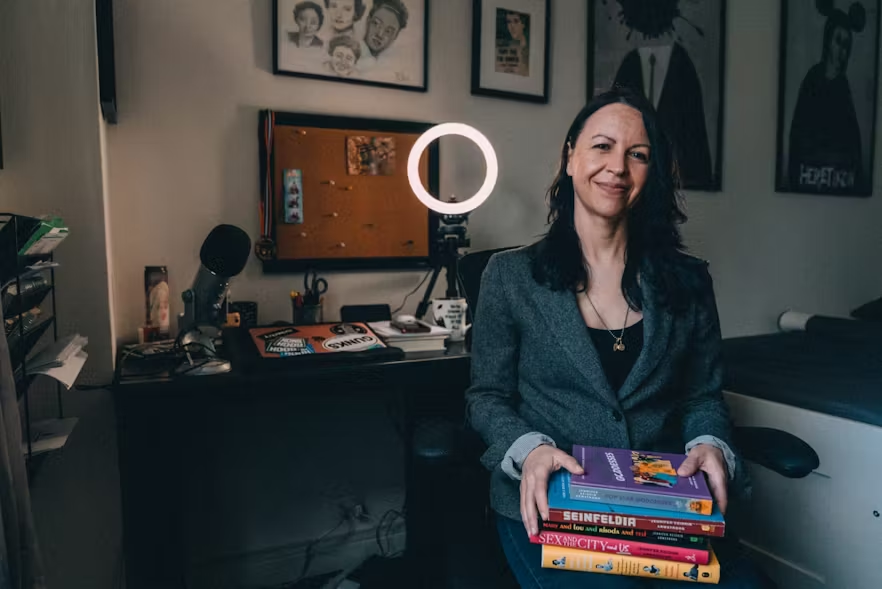The night before I interviewed New York Times bestselling author Jennifer Keishin Armstrong, I read lines from her pop culture history books out loud to my husband. Lines like this one from Seinfeldia, in which she perfectly captures Jerry Seinfeld and Larry David’s stand-up delivery style, made me laugh out loud: “Seinfeld’s delivery often ascended to a high-pitched warble; David favored a guttural grumble that could become a yell without warning.” I couldn’t put her books down (or seemingly stop reading lines aloud).
I first discovered Jennifer via the Skillshare writing courses I took of hers a few months back. I loved how she talked and wrote about celebrities like people instead of products. She saw the creators behind the fame, the stories behind the successes, and the gritty inspiration behind the gloss of show business.
It’s fitting then that she shows up to our Zoom interview gloss-free – “I didn’t dress up for this,” she laughs, enjoying the opportunity to be on camera without having to turn on her ring light. She’s wearing a pink sweatshirt, no makeup; her hair parted down the middle in two low braids, with a few long bangs tucked behind her ears.
The walls in her home writing office are filled with framed photos of various women, and when I ask her about them, she says: “Well, that’s Beyonce.”

She explains that when you leave, they give you a fake cover as a parting gift, placing your face on the body of someone else’s cover shoot along with fake headlines that reference your work. Since Jennifer visited the set of 30 Rock and interviewed Tina Fey, her cover featured her face digitally added onto Tina Fey’s body: “so that’s amazing and creepy,” she laughs.
Next to that, just above her writing desk, there’s a beautiful drawing by Jennifer’s friend and fellow pop culture author Erin Carlson, featuring four pioneering women in television: the subjects of Jennifer’s next book, launching in just a few weeks from our interview.
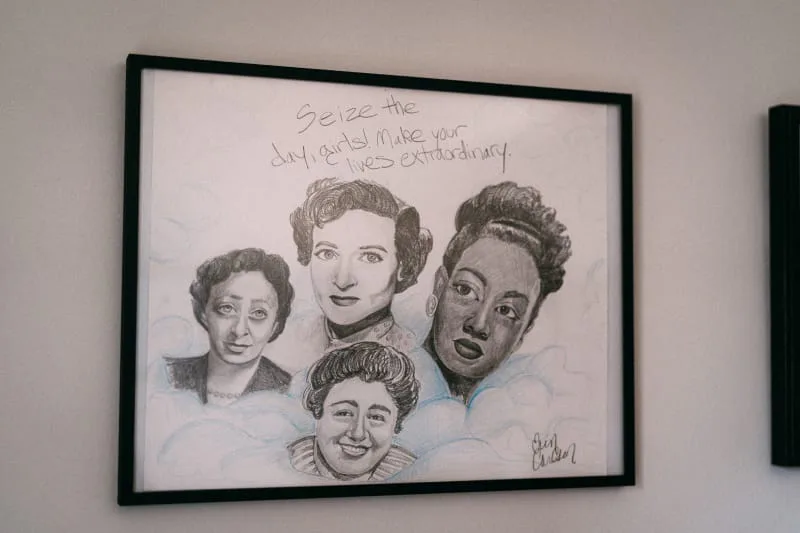
This is where she writes all of her books, in this at-home writers’ office in her New York City apartment, overlooking the water and the Queens skyline; I swoon a little when I see the view.
Her writer’s life almost seems like a myth: The full-time, New York Times bestselling writer living in New York City, creating from a window overlooking water and highrises.
Even she didn’t believe such a fairytale life was really possible. But she secretly dreamed it anyway, always looking for new steps to take in her writing career, not so much because she really thought this kind of ending was possible, but mostly because she simply couldn’t not write.
“I was such a little stress ball.”
Jennifer was intensely driven and focused from a young age; we both lovingly reference Taylor Swift and Leslie Knope when talking about her early drive and sense of purpose. When it came to her first trips to the library, it was love at first sight – “I just felt like you can do anything there.” She knew in her gut she was going to be a storyteller too. By the age of eight, she was spending all of her free time in the library, reading everything she could about…the writing business.
“Wait,” I ask, just to be sure, “you were reading freelance business books at eight years old?”
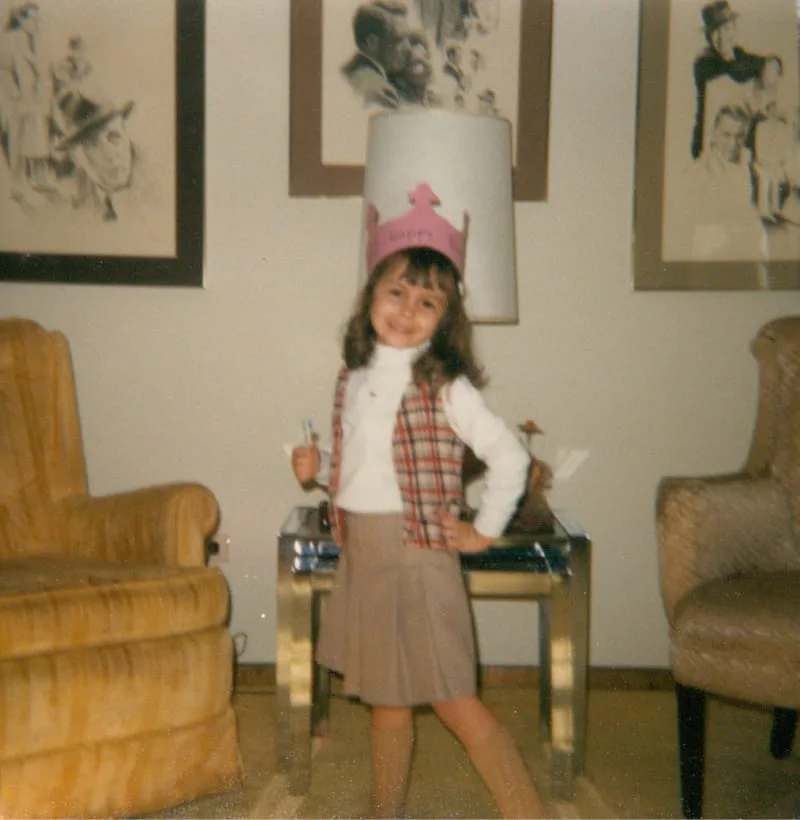
Jennifer dressed up like Mary Tyler Moore.
Yes, she assured me, she really was. Her childlike belief mixed with her natural intensity gave her the chutzpah to pursue a writing career before she was even in middle school.
By the age of 12, Jennifer was frequently mailing queries to magazines like Reader’s Digest; her mom still has a few of the rejection letters she received.
By high school, her dad gave her another idea: “You should just write to the local newspapers and tell them who you are.”
She wrote a letter to the Joliet Herald News in Illinois and spent the next summer covering water commission board meetings and asking people their opinions about pressing issues in local malls.

Writing for a newspaper seemed like the most practical way to make writing a career back then. She discovered and attended a journalism summer camp, and after high school she went to Northwestern to study journalism.
Her real dream, though, she told her college counselor, was to write for magazines like Rolling Stone and Entertainment Weekly. She also hoped to be a novelist one day.
But for now she would focus on journalism, the clearest path to making a living writing, and on the only other things she could control: improving her craft and working, working, working.
After graduating from Northwestern, she spent four years working for local newspapers.
And she hated it.
Well, not always. She loved interviewing people and telling stories, but the tight deadlines and incessant need to be the “first” to break a story didn’t fit her penchant for in-depth research. “I just want to tell a good story. I don’t want to have to fight other people for it.”
There’s a kind of haunted exhaustion in her eyes when she recounts those days to me. “I was such a little stress ball,” she says more than once when remembering that season. But what she didn’t know then was that stress ball seasons sometimes have a way of teaching and redirecting.

“No, I really don’t want to do that.”
Tired of chasing stories, Jennifer pitched an in-depth piece during her job at The Press-Enterprise in Riverside, California. She spent two weeks at the local Ronald McDonald House in Loma Linda and wrote a long narrative piece about its impact on people’s lives.
She fell in love with the experience: deeper reporting, lots of interviews, no rush.
It was featured in a multi-page spread as a special report story in The Press-Enterprise on Sunday, May 2, 1999. Later she sends me photos of the paper where the story appeared, and the first line that catches my eye reads: “The nine employees and 50 volunteers at Loma Linda’s Ronald McDonald House have grown accustomed to the constant hellos and goodbyes.”
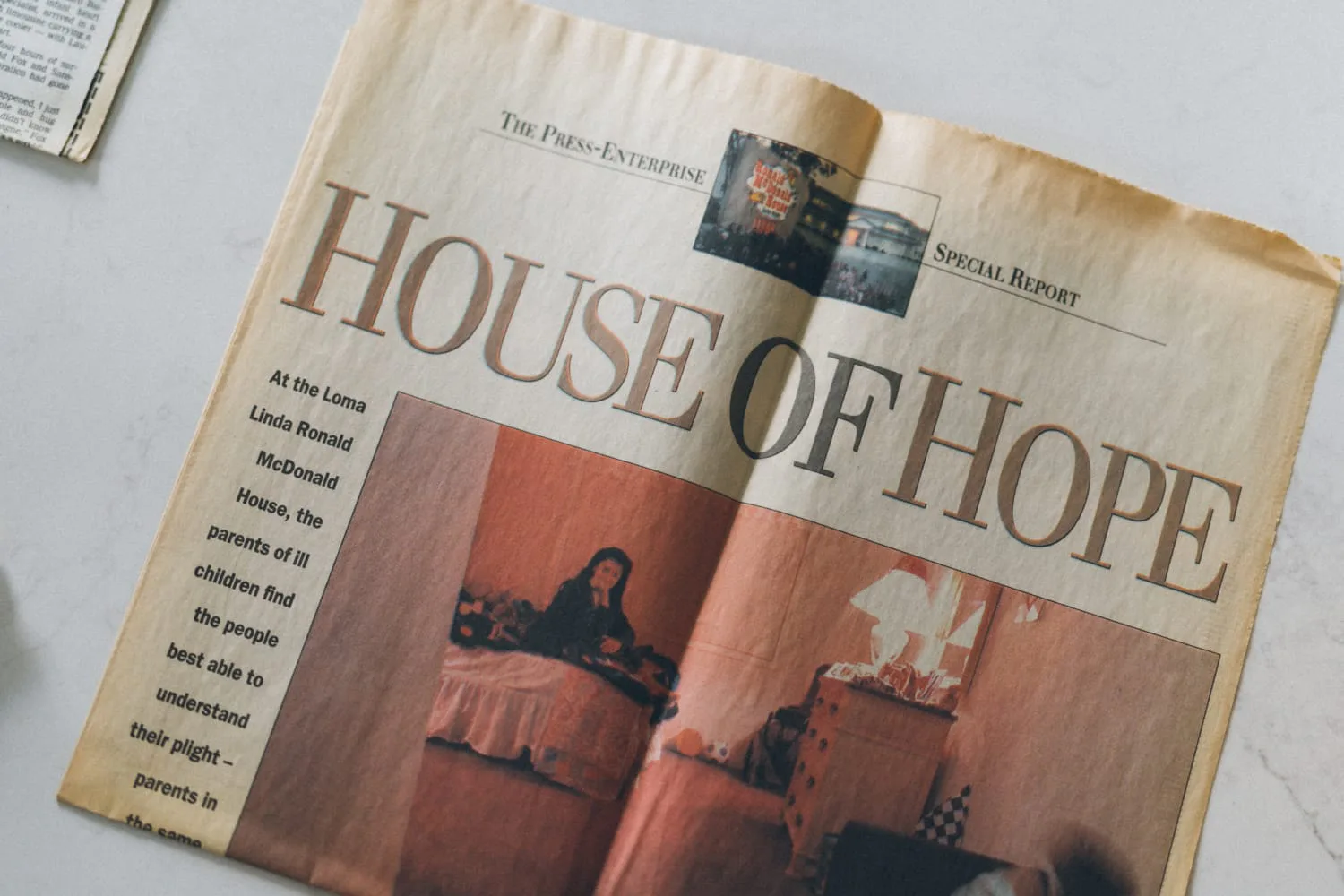

Through housing so many families – and especially by living in the house as its resident manager – Karen Pogue has collected more heart-warming and heart-wrenching stories than a Chicken Soup for the Soul book.
Or her ability to write scenes like a skilled fiction narrator:
Megan Sansbury’s journey to Loma Linda began when her fiance, Greg Fox, looked down at their 3-day-old daughter and told her she could have surgery or a transplant to fix her weak heart. When he said “transplant,” the baby squeezed his finger.

She did it – she was a professional – but she knew it was time for a change. Maybe it was time to pursue an old dream? Maybe it was time to try to write for magazines?
She explored the idea, and the advice she kept seeing was to start in trade magazines, so she applied to as many as she could and eventually got hired as the managing editor for two magazines: Residential Lighting and Accessory Merchandising. It wasn’t Rolling Stone, but it got her foot in a new door.
And since the magazines she was editing were mostly photos, the job gave her a chance to slow down, unwind the ball of stress a little, and even have extra energy to take on some online music writing assignments for a website called SonicNet (later acquired by MTV).
She was interviewing Aaron Carter on her lunch break and then going back into the office to source photos of throw pillows.
By then she’d lived in California and Chicago, taking jobs wherever her college boyfriend was stationed for the Navy or where he attended graduate school. When he graduated, it was her turn to decide where they would go next.
She chose New York City.
“I just felt so Midwestern.”
Her first job in The Big Apple?
Folding sweaters and greeting shoppers at a mall in New Jersey.
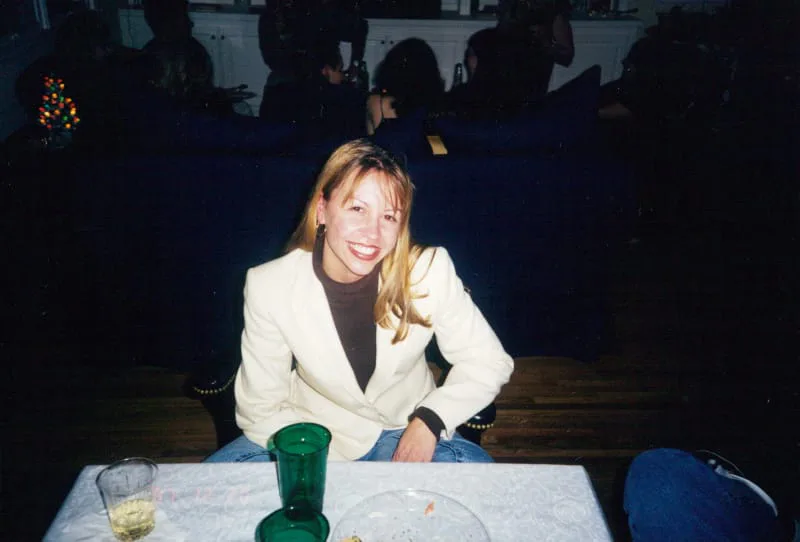
People told her it would be hard to get a writing job in New York before living there, “because no one believes you’re really going to move there.” So she moved first, got a job at a mall, and interviewed for writing jobs like crazy. That season, she remembers, felt painfully long, but looking back she’s amazed that she got a job in the magazine industry within a year.
Her first magazine-related job in New York was copy editing old Condé Nast articles as they moved back issues from computer archives to the internet for the first time. She spent her days erasing all the “computer gibberish” that resulted when transferring the files. It wasn’t exactly storytelling, but she was “in.”

“Well, I did this home decor stuff,” Jennifer replied, “So I could do that.” She assumed that was the only magazine writing job she’d be qualified for based on her experience.
But, something in her kept her from stopping there. Before she lost the nerve, she added: “But…my dream job is to work at either Teen People or Entertainment Weekly.”
When an assistant position opened up at Entertainment Weekly a few months later, the HR rep reached out to her, and she applied, even though she knew there was no way she’d be able to compete with all the other New York City writers and candidates. But, what did she have to lose?
She was surprised to get an interview.
And again when she moved to the next round, and the next. She couldn’t believe it. There was no way she could work for her dream publication after only five months in New York City, right? That doesn’t happen.
Except it did.
The first task her boss gave her was to send out the rejection letters to everyone who applied for her position and didn’t get it. As she emailed rejection letters to many incredible candidates – people who were connected in the industry, people who’d gone to ivy league colleges, people who’d graduated from Columbia’s rigorous graduate-level journalism program – she just couldn’t understand how she got the job:
I just felt so Midwestern. I’d been to New York once before this in my life when I moved here and I didn’t know anyone here.
She didn’t have the education or the contacts some of those other candidates had; why would he hire her? A trained journalist, she couldn’t let the question go unanswered. She asked her boss why he hired her over the others.

Because you had been a newspaper reporter. I can give you the contacts you need to be in this business, but if there’s a reporting situation, we know we can just throw you in and you’ll know what to do.
Sometimes stress ball seasons pay off in ways you can never predict.
“That’s a thing other people do, that’s not for us.”
Jennifer began her dream job at Entertainment Weekly in April 2002.
She thrived, and lived a life she could hardly believe. One day she’d be on the set of Grey’s Anatomy, on another flying to Hawaii for a week to write about the first season of Lost. She also spent time interviewing Tina Fey on the set of 30 Rock.

It was as good as it sounds, so much so that even after working there for years, she didn’t want to move up; she didn’t want to be an editor or a boss.
She wanted to stay close to the research and writing.
But it was hard to ignore that intense part of her that did still want to keep growing, learning, and stretching.
Maybe it was time again to unearth another old dream?
Maybe it was time to write a novel.
The city gave her courage to try.
You’re suddenly hanging around with people who act like [writing a novel is] a completely reasonable thing. You go from the Midwest where everyone is like “That’s a thing other people do, that’s not for us.”
She was surprised and encouraged when, for the first time, she tentatively told people she was working on a novel and their response wasn’t “Oh that’s weird” but “Cool, what’s it about?”

She called off the engagement and wedding, moved out of the very nice apartment he’d just bought for them in Manhattan, and wrote a fictionalized version of the story.
She found a literary agent relatively easily through the literary community she’d been spending all her evenings with.
But the novel was never picked up by a publisher. No one wanted it.
“Oh, I could do this.”
The novel never sold and Jennifer and that agent eventually parted ways, but when an opportunity came up to contribute an essay for an anthology, she wrote a non-fiction version of the story of her canceled wedding.
Another agent read that anthology and loved her essay, contacting Jennifer to ask if she’d be interested in writing a book a major publisher wanted but needed a writer for: a book on the 1950’s Mickey Mouse Club.
Jennifer still dreamed of writing a book, so she said yes and then hung up the phone and googled “1950s Mickey Mouse Club.”
She spent a full year writing for Entertainment Weekly for eight hours every day and writing the book on all of her nights and weekends. Her social life disappeared. She’d never done a book like this before…and she was turning into a stress ball again.
She finished it, learned a lot, and thinks she did an “okay job.” But most of all, she was just happy she “got through it.”
The book was published in October 2010.

But it flopped; it didn’t sell the way the publisher had anticipated.
But Jennifer was undeterred. Because even though it didn’t sell a lot of copies, the act of creating it showed her something important: “Oh, I could do this.”
She wanted to write more books.
But she knew she didn’t want to do what she’d just done – writing a research-based book while also being a full-time staff writer wasn’t a sustainable lifestyle for her. Her new dream was to come up with a book idea that would garner an advance that would allow her to quit her job and write a book full-time.
It was a crazy dream.
But it seemed possible.
She’d gotten a decent advance for The Mickey Mouse Club book because the topic already had a dedicated fan-base. What if she wrote a similar kind of behind-the-scenes history of another popular TV show, but this time one she really loved and cared about?

Her literary community recommended a new agent who loved Jennifer’s proposal for The Mary Tyler Moore book and signed her.
But Jennifer kept something from her new agent.
She’d secretly decided that if this book didn’t sell for a certain amount of money, an amount that would allow her to quit her job and work on it full-time, then she wasn’t going to do it at all. She knew she couldn’t repeat what she’d just put herself through. Plus, this topic (one of the first TV sitcoms to hire multiple female writers) mattered too much to her to not have the time to do it justice.
Jennifer’s new agent shopped the book to publishers; it got rejected a few times but there was enough interest for it to go to auction, where all the interested publishers could put in a bid before a certain deadline.
One of the major publications that rejected the proposal early on was an imprint of Simon and Schuster. But when the publisher at Simon and Schuster at the time, Jonathan Karp, was looking through the notes of books that had been rejected at meetings, he noticed The Mary Tyler Moore book and thought it sounded great and called Jennifer’s agent himself.
Twelve hours before the auction closed, Jennifer’s agent sent him the proposal, and told Jennifer what a big deal it was that he’d requested it. When Jennifer googled him she couldn’t believe it, but she tried not to get her hopes up. Rejection is common in publishing, even after someone wants to know more.
Twelve hours later, the phone in Jennifer’s Entertainment Weekly office rang. It was her agent. The book sold to Simon and Schuster. She told Jennifer for how much.

Jennifer cried in her office.
It was quitting-your-job money.
Not a ton of money, Jennifer points out (close to a public school teacher’s salary), but just enough to live on.
She left her job at Entertainment Weekly after almost 10 years to become a full-time author.
“I felt like I should know what I was doing and I wasn’t sure I did.”
Now she was able to give book writing her full attention. Except it wasn’t as easy as she thought it would be.
While quitting her job gave her the time and freedom to give it her all, now the stakes were higher. “I was still living alone and just out there by myself. I felt like I should know what I was doing and I wasn’t sure I did.”
Her first “two major failures” lingered, and she wondered if she could really do this. There were times she almost stopped, when the book felt like a big mess, when she thought, “I can’t do this anymore.”
But just like her first book, she got through it. Her editor, who ended up being the Simon and Schuster executive who’d plucked the book out of the reject pile, Jon Karp, was also integral, helping her merge her magazine skills with her old novelist dream.
When he read her first draft of the Mary Tyler Moore book, he pointed out that it felt like a long Entertainment Weekly article and needed to read more like a narrative, saying, “You want to tell a story, the same way if you were writing a novel. You need to think of it like that, but use real facts.” He encouraged her to turn quotes and research into scenes.
Her voice drowned out by the voices in her head…
He also pointed out that chapter two was where she seemed to get really excited, why not make that the beginning instead?
What she didn’t tell him then was that chapter two had been her original opening, but she’d changed it at the last minute, questioning her instincts, her voice drowned out by the voices in her head left over from feedback she’d gotten from her first book.
That one phone call with her editor changed everything. It was the first time she learned to trust herself to write a good book. “Ever since I have basically been able to write a pretty decent book on the first try.”
After The Mary Tyler Moore Show book was published, she continued writing books, each taking about two years from the proposal phase to being on the shelves. She wrote one on Sex and the City, one on pop stars like Beyonce and Taylor Swift, and one on Seinfeld.

When I got off the phone I told the driver, “I just have to tell someone this, and you’re here, so: I just became a New York Times bestseller!”
He was very sweet and said how happy he was to be with me at that moment. Then I texted my family and my partner to tell them.
Then I did this event, which was not very well-attended, but it was super easy to take that because I had just become a New York Times bestseller!
I had definitely wanted it and tentatively hoped for it by this time. I understood that it was a goal if I wanted to keep making decent advances and doing this full-time.
But it’s also a dream I don’t advise having, because it’s such a long shot. I’m still mystified by it.
“What if you didn’t have to be freaking out all the time?”
Jennifer has now been a full-time author for over a decade.
And while finding out she made the New York Times bestseller list was a dream come true, it isn’t what sustains her, financially or otherwise.
In some ways, that distinction added more pressure. When her Sex and the City book, which came after the Seinfeld one, didn’t make the list, it was demoralizing. But also freeing.
It relieved a little pressure, and made her wonder what else she could do to not put so much pressure on every book, wondering, “What if you didn’t have to be freaking out all the time that you haven’t sold your next book yet?”
That’s when she started teaching writing courses online and exploring other ways to make a living as a writer:
The more you can find ways that make sense for you to make money elsewhere, the less you are pressured. It’s such a boring thing to be like, “You should learn money management in order to be more creative.” But it’s something I’m thinking about so much right now – this constant balance of creativity and making a living.

I wanted some way to get the word out to the people who cared.

And the statistics she is now able to see when she sends out emails always surprises her, especially when she checks on what links people click most:
It turns out they actually click on links to my books and book events more than almost any other content I provide, which means that sometimes I’ve been trying too hard.
They really did sign up for my newsletter just to find out about me.

A few weeks later, I attend the first stop on her virtual book tour, with the American Writer’s Museum.
“A modern author fairytale.”
This time, Jennifer appears on screen wearing two necklaces and a shiny black fitted jacket with silvery architectural details on the shoulders.

Throughout the interview, she talks like she writes – like she was there, like an omniscient fiction narrator. Anytime I read her books I often take a moment to remind myself that she wasn’t actually alive when, say, Hazel Scott, “the Beyonce of her day,” was making television history as the first Black person to host a late-night show and delighting audiences by playing two pianos at once. Or that Jennifer wasn’t actually in the coffee shop sitting with Jerry Seinfeld and Larry David when they came up with the premise for Seinfeld.
She embeds herself so fully in research and archives and interviews that her stories read like novels, her interviews like she’s talking about old friends.
During the virtual book tour interview, Jennifer answers almost every question with a story. My favorite is the one she tells about how Hazel Scott would not perform in segregated venues: She would walk in, then walk out, giving interviews afterward to the press saying, “How can you pay to see someone who looks like me and not want to sit next to someone who looks like me?”
After a few more questions and stories, the book event ends, and instead of walking out of a library or bookstore as I used to do when these kinds of events were in person, tonight I simply shut my computer and remember what happened before one of Jennifer’s in-person book tours a few years ago.

She was walking the streets of New York City with an assistant to get future Instagram photos to help promote her Sex and The City book. As the photo shoot came to an end she kept her head down refreshing her MTA app checking for train delays; at one point it wasn’t working so she looked up – and when she did, she he saw Sarah Jessica Parker on the street selling, well, shoes; she’d recently launched her own fashion line and was at her very own pop-up shop.
Jennifer walked up to say hello; she’d interviewed Sarah in person and on the phone for the book, but didn’t assume she’d remember her. Their greeting turned into shoe shopping for Jennifer’s book tour.
Jennifer reached for a pair of Carrie-like high-heeled shoes and Sarah said, “but you’ll be standing all the time, right?”
So instead, she directed Jennnifer to a pair she loved to wear herself: silver and glittery and in the style of Dorthy’s shoes in Wizard of Oz. Sarah put them on Jennifer’s feet herself, “a modern author fairytale,” Jennifer shares in slight disbelief.

You can connect with Jennifer on X/Twitter, subscribe to her newsletter, or learn more at jenniferkarmstrong.com.
